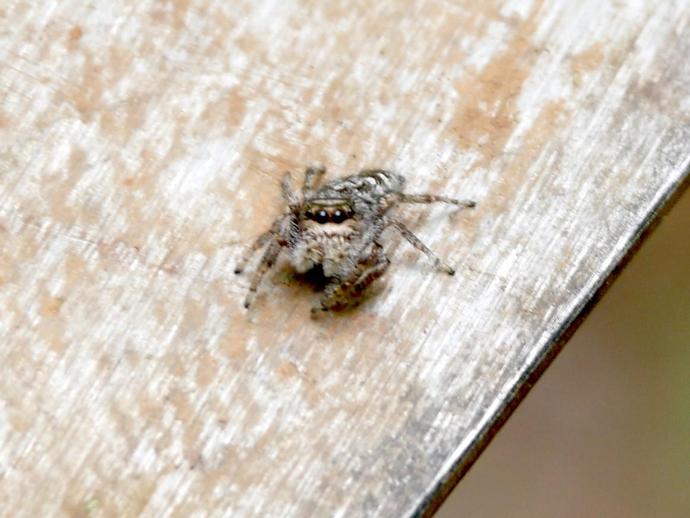December 27, 2020
We're reaching into the archives for today's #BenInNature update! The following post was originally published on May 4, 2020.
Call me crazy (and many have), but I've always thought jumping spiders are kind of cute. Maybe it's their two big eyes (out of their eight total), or maybe it's the fact that their chelicerae look like fuzzy mustaches, or maybe it's the fact that they're inquisitive and angle themselves to look at you. Whatever the case, jumping spiders deserve far more love than they receive.
This particular jumping spider is Platycryptus undatus, commonly called the tan jumping spider. Unfortunately, I didn't have my macro lens with me when I spotted it, so you'll have to forgive the quality of the pictures. These spiders can be found throughout much of North and Central America. Despite their small size, they're fairly easy to spot because they like to hunt on vertical surfaces. They also don't flee from humans and don't readily bite, so you can even hold one in your hand as long as you're careful not to squeeze it.
Jumping spiders have fantastic vision and are excellent hunters. When they spot a potential prey item, they study it for a bit before stealthily approaching it. Once they're close enough to make the leap, they use their silk to attach a line to whatever surface they're crouched on and then spring forward, grabbing the prey and biting it.
Amazingly enough, jumping spiders don't always approach their prey in a straight line. Instead, they sometimes take a winding path, almost suggesting that they're trying to avoid being seen by their prey. It's pretty remarkable behavior for a creature with such a tiny brain and it's still being studied.
ABOUT #BenInNature
Social distancing can be difficult, but it presents a great opportunity to become reacquainted with nature. In this series of posts, Administrator of Science Ben Williams ventures outdoors to record a snapshot of the unique sights that can be found in the natural world. New updates are posted Monday - Friday, with previous posts highlighted on the weekends.
NEW: TRIVIA CHALLENGE
You've seen the posts. You've learned the facts. Now, it's time to prove you are a #BenInNature Mega Fan! The museum's education team has developed the #BenInNature Trivia Challenge to identify the most devoted fans out there! Everyone who successfully answers each trivia question correctly will be congratulated by having your own nature selfie posted to the museum's #BenInNature Mega Fan Photo Album on the official VMNH Facebook page! Learn more and download the trivia challenge today by visiting www.vmnh.net/research-collections/beninnature-trivia-challenge.
NATURE PHOTO IDENTIFICATIONS
If you discover something in nature that you would like help identifying, be sure to message us right here on Facebook with a picture (please include location and date of picture) and we'll have our experts help you identify it!

 Hours & Admissions
Hours & Admissions Directions
Directions

